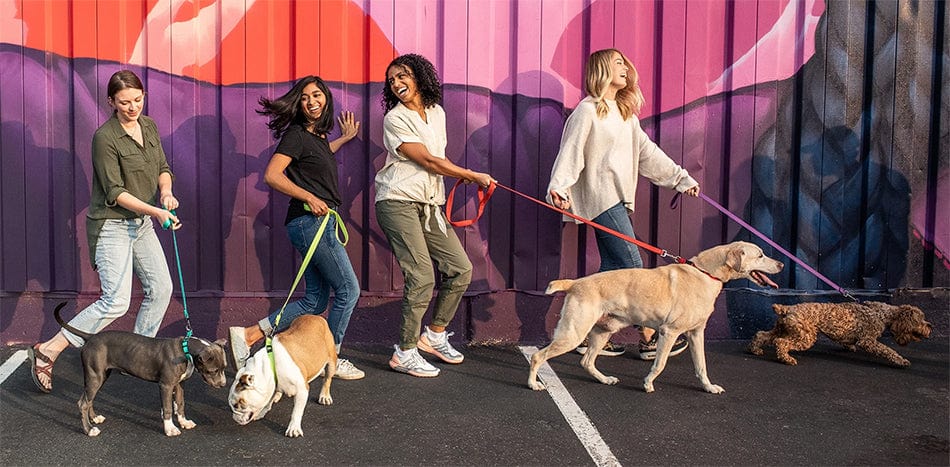This post is written by holistic veterinarian at "I and love and you", Dr. Angie Krause, DVM, CVA, CCRT.
If you are loved by an itchy, allergic dog, chances are you have experienced treating a hot spot (or two). Dogs experience hot spots when they scratch, bite, or chew hair off a concentrated area of skin. The itchiness is usually caused by food or environmental allergies. However, local irritants like bug bites, burns, and chemicals can be triggering enough to cause this nuisance. Trauma to the skin from nails and teeth can often cause secondary bacterial infections. This makes the skin even itchier and the cycle continues. In this article, I am going to outline how to prevent and treat hot spots on your pup!
Preventing Hot Spots
Most hot spots occur secondary to environmental or food allergies. If your dog’s allergies (itchiness) occurs in certain seasons, or if it improves with bathing, chances are good that your dog has environmental allergies. If your pup is itchy all year round, it’s possible your dog has food allergies, environmental allergies, or both. It’s important to learn how to differentiate food allergies from environmental allergies and work with your veterinarian.
If you discover that your pup has food allergies, eliminating the specific food allergens will be sufficient to prevent further hot spots. However, if your dog is allergic to pollen in the spring time or moldy leaves in the fall (examples of environmental allergies), you can follow the steps below to prevent hotspots.
How to Prevent Hot Spots
-
Immunotherapy. This treatment consists of weekly injections or drops under your dog’s tongue. Don’t worry, the injections are tiny and go right under your dog’s skin. Immunotherapy trains your dog’s immune system to be less reactive to common environmental allergens like grass, dust, trees etc.
-
Control the itch. If you know that certain months are hard for your dog, you can give them medications during these times to help decrease the amount of itchiness they experience. Traditionally, veterinarians have used steroids to decrease itchiness, and thankfully we now have much safer, more effective alternatives. Talk with your veterinarian about your pup’s options.
-
Regular bathing and paw wiping. Bathing your dog regularly removes the allergens from their fur. Be sure to avoid hot water and blow dryers as these can aggravate itchiness. Additionally, wiping your dog’s paws before they come in from outside can decrease the amount of allergens on their feet.
Treating Hot Spots
The earlier you can treat the hot spot, the faster it will resolve. If you see your pup scratching, biting, or chewing aggressively, intervene as soon as possible. You can use the following steps to knock out hot spots.
-
Prevent your dog from licking/scratching. This is usually best accomplished with an Elizabethan collar, also known as an e-collar or ‘cone of shame’. If an e-collar doesn’t work, you can use t-shirts, socks, and baby onesies to protect the area.
-
Shave. Trimming the hair away from the area can help you visualize the sore and will aid in keeping it clean. If your dog suffers from hot spots frequently, consider investing in a pair of clippers. To avoid cutting your pup’s skin, avoid using scissors.
-
Clean the area. I like using chlorhexidine products, like these wipes, to clean the area twice daily. You can also use warm soapy water. If the skin is infected at a deep level, a course of antibiotics from your veterinarian may be in order. Taking daily pictures of the hotspot may be helpful in tracking its progression or resolution in the first few days of care.
-
Supplements. Be sure your pup is on a high quality probiotic and fish oil supplement to help promote skin health as the wound heals.
With love,
Dr. Angie

